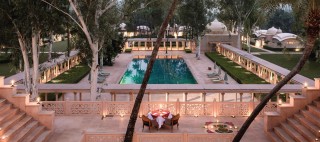

Marching On | Flash Post 427
Button, we have not written a post in a while and our readers will wonder if everything is well with us. Especially in pandemic times. Think of something, na. One of them has written in asking if we have done the disappearing act yet again!
With Omicron having taken centre-stage now, everybody’s attention is once again diverted to checking out if numbers are climbing, if there are any new symptoms they should be aware of and how contagious it is plus with COVID making a fresh comeback, nobody—and that includes doctors, virologists, immunologists, the World Health Organisation—knows for sure what the virus is all about till now. There are multiple theories doing the rounds and it’s currently very scary. There are new updates on what to do and what not to do but the big question is: Do we even know what COVID is all about in it’s entirety! Does anybody? Will we ever? The answer is NO.
Then the only solution to that is, I would say, live your lives with ample precaution but let us not stop living. So, for starters, let’s talk of something that’s hopeful. The fact that we have all managed to escape this virus for nearly two years proves that we are doing something right.
What would you like to talk about?
I’ll tell you about this place we are in currently. Nestled in the Aravalli mountains in the district of Alwar, the Amanbagh is a stunning place to be in and on the ride here, we passed through never-ending fields of greenery, the likes of which I have not seen in years. I saw shades of green I didn’t have a name for and the mustard fields were a treat for the eyes.
You will be very pleased to know that the three children you have left back at home are on their best behaviour.
So, this place Button, is stunningly beautiful and our hotel is spread over 49 acres and the only thing you see on your way out to the dining area are trees, trees and more trees. The eucalyptus trees outside our room stand out from the rest because they have stark white trunks and branches but the fascinating bit is that not one tree on this property was cut when the hotel was built. The hotel was actually built to include the trees in the plan.
How sensitive is that.
The place is full of friendly monkeys and a haven for bird-spotters. A group of birds that move around in sevens at all times have been named The Seven Sisters by the hotel staff. Didi and I visited their herb garden today and we saw beds of fresh coriander, basil, parsley, mint, marjoram, thyme and many more which are grown and maintained by locals who are employed by the hotel. The green chutney we have with Indian dishes is prepared with coriander and mint picked fresh from this garden.
I have a question to ask.
Shoot.
If humans are getting infected with COVID, wouldn’t monkeys also catch the virus since humans have descended from apes? Shouldn’t they get their jabs too?
That’s a good question but I’m sorry I don’t have an answer.
Isn’t this the first trip the four of you have taken since the pandemic?
That’s right.
What do people do in places like Amanbagh?
You mean guests?
Yes.
Nothing. The resort is meant for people to unwind, to be by themselves, to experience quietness and heal. It’s a place for healing of the body and the mind.
Is there any history attached with the place?
I was about to tell you a little. The region is rich in early Hindu history, dating back to the beginning of Hindu civilisation and replete with legends. The epic Mahabharata tells of the five Pandavas who spent their last years in exile within a few miles of this resort over 2 millennia ago. In the more recent past, the area was dominated by a group of warrior clans, the Rajputs, who controlled this region of India for nearly 1000 years. Raided repeatedly over time by Moghul armies, it was finally conquered in the 17th century by Emperor Shah Jahan, the man who built the Taj Mahal.
What kind of cuisine does this place serve?
The nice thing about the place is that they serve anything you want at any time of day but I am told that the local food is something one should definitely try.
What dish did you like the most?
Kali dal or dal makhni is a dish I absolutely love. When dinner was laid out for us at Jhilmil Bada, a tiny spot within the resort within walking distance, I jumped when I was told that one of the items on the main course was dal makhni and butter naan. You should have seen my plate, Button. I licked it clean!
Any encounter with primates?
Well, your chotididi came across a huge red-faced monkey sitting on a table in her living area chomping away on a banana. When their eyes met, he stuffed the rest inside his mouth, picked up the other fruits and casually strolled out of the room.
Who seemed more terrified?
Didi, of course, because she sent WhatsApp messages to warn us of the monkey who had just paid her a visit and was attempting to open the door again!
14 Comments